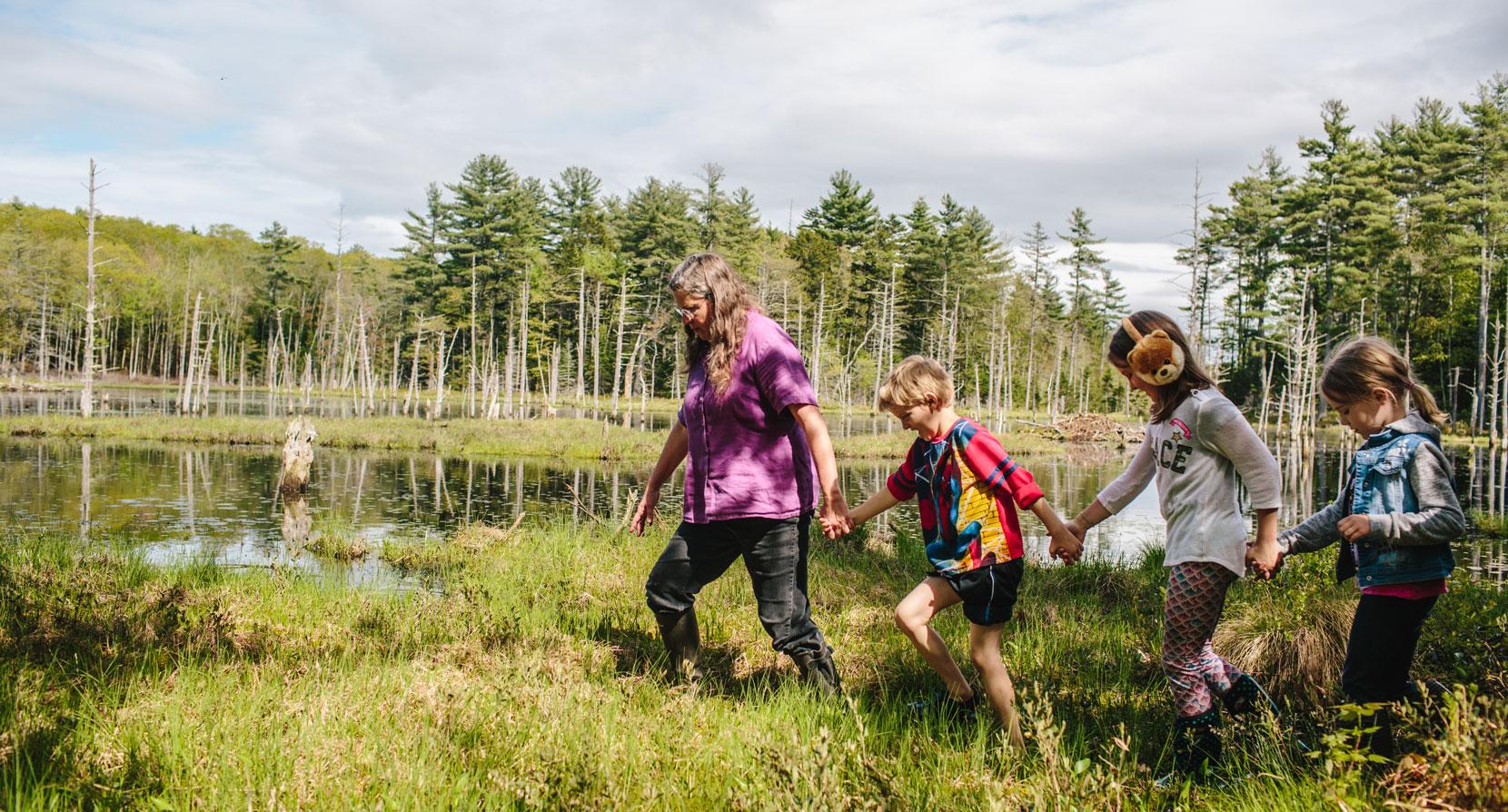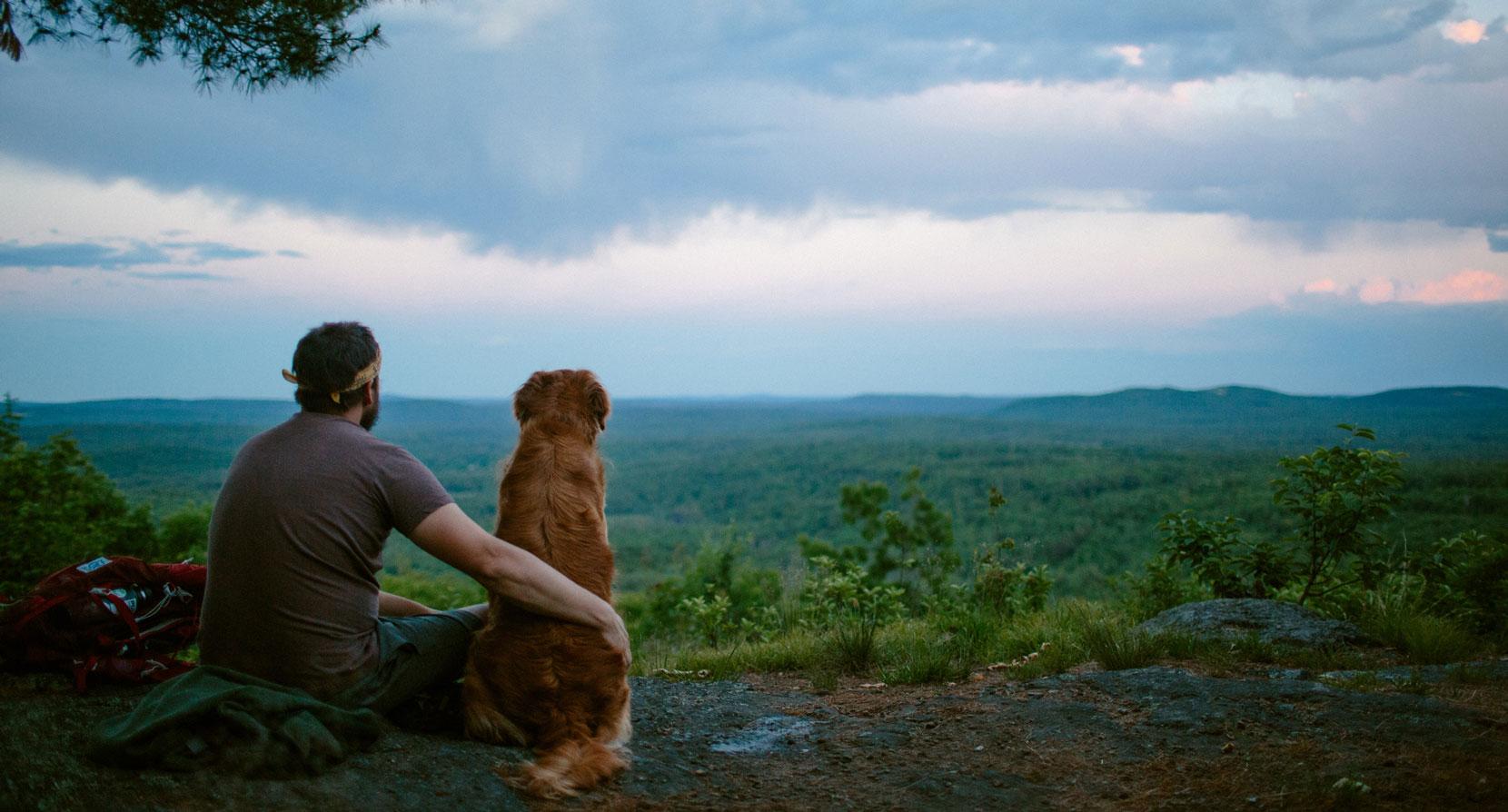- Tags:
- Land Conservation

Dave Anderson, senior director of education for the Forest Society, leads a group hike for the “5 Hikes in 5 Weeks” series at Mulligan Forest in Nottingham. Mulligan Forest is a 2,027-acre working forest owned by the Fernald Family and is open to the public for low impact recreational and education use. The Forest Society holds a conservation easement on the land with the Town of Nottingham.
Not long ago I had no idea what conservation actually meant. I grew up a nature-loving kid from southern Maine and studied the environment and society as a student, but that didn’t mean I knew how one might protect the tide pools or trails I had grown to love. I just knew I wanted a career that would help the environment.
Six years ago I submitted an online volunteer application to what looked to be New Hampshire’s oldest environmental organization: the Society for the Protection of New Hampshire Forests (aka the Forest Society). Right away I got an email back asking if I would be interested in coming in to help organize their digital photo library. I never would have guessed (but might have hoped) that a simple offer to help could eventually turn into a career.
Like so many people, my experiences on conserved land in the state had already shaped me. My daily rambles through the wildlife-filled Bear Brook State Park and occasional knee-crushing hikes in the White Mountain National Forest replenished my spirit. That’s where my mind went when I saw the wall in the Conservation Center showcasing the Forest Society’s history of “Conserving New Hampshire’s Special Places since 1901.”
Once I began sifting through virtual piles of photos I started to see the behind-the-scenes network that helped protect New Hampshire’s most significant landscapes as well as hundreds of lesser known places. I saw a story unfold from all the photos of people, not landscapes. People on group hikes, people signing papers and shaking hands, people on tractors and trails, people using tools and wearing hardhats, people tasting maple syrup, and much more.
I also recognized Mount Monadnock in a folder called “Reservations.” Since 1915, the Forest Society has acquired over 5,000 acres at Mount Monadnock and Gap Mountain in the towns of Dublin, Marlborough, Troy, and Jaffrey in order to protect the mountain and its natural surroundings. Did you know the state leases much of this land to operate Monadnock State Park?
For every Mount Monadnock, I came across 100 photos of places wholly unfamiliar to me. I would go from office to office at the Conservation Center asking staff about place names. What were all these places? Were they reservations like Monadnock?

Many sounded like family names. I discovered how some conserved places are still privately owned and have something called a conservation easement. Conservation easements are a legal agreement with a land trust like the Forest Society to keep land permanently undeveloped while allowing management for forestry, wildlife, agriculture, and recreation. In some cases, I saw photos of multiple generations who came together to forever protect the scenic views, wildlife habitat, working land, or whatever else was special to their family.
I also came across many town-owned places. These are places where people came together protect their community’s most valuable natural resources, such as water and wildlife habitat, and to learn about stewardship, public recreation, and land management.
In fact, there are people in almost every town who decided at some point they wanted to help the environment, but didn’t have the faintest idea where to start. Perhaps they got involved in a local effort to protect open space from a specific threat of development. The next thing they know, it’s 20 years later and they’re the chair of their local conservation commission.
After volunteering and some part-time work with the Forest Society I ended up working with conservation commissions and nature-based volunteers across the state. The work introduced me to many more special places, and one of the things I enjoyed most was photographing people on conserved lands.
For the past three years, my conservation-inspired photographs have been used to help promote New Hampshire’s annual Land Conservation Conference, “Saving Special Places.”

The conference is a gathering for conservation commissioners, land trust staff, and anyone interested in conservation to connect with a statewide network that’s been doing this work for over 100 years.
I’d encourage anyone to attend even if you think you don’t know anything about conservation. I wish I had attended years ago when I was a volunteer. You don’t have to know how you can help.
The conference is also a way to involve more people in the decisions for how and where land conservation happens. If you want YOUR special places conserved, you have to tell someone, whether it’s your conservation commission, a land trust, or your neighbors!
Seven different Forest Society staff members are helping to deliver conservation-related workshops. The keynote is by Jameson French, former Forest Society Board Chair and nationwide leader in forestry and forest conservation. We hope you will join our staff and partners on Saturday April 6 from 9 am to 4 pm at Prospect Mountain Regional High School in Alton.
To learn more and to register, visit savingspecialplaces.org.
Emily Lord manages the Society for the Protection of New Hampshire Forests’ online and social media presence. Reach her at elord@forestsociety.org or @forestsociety on Instagram/Facebook.
